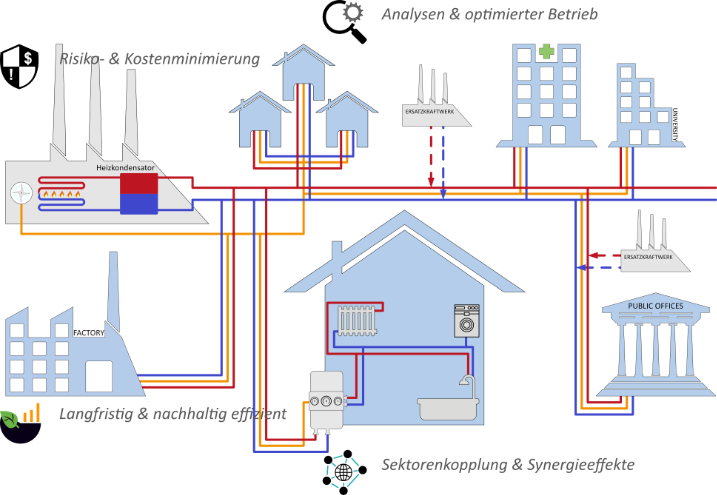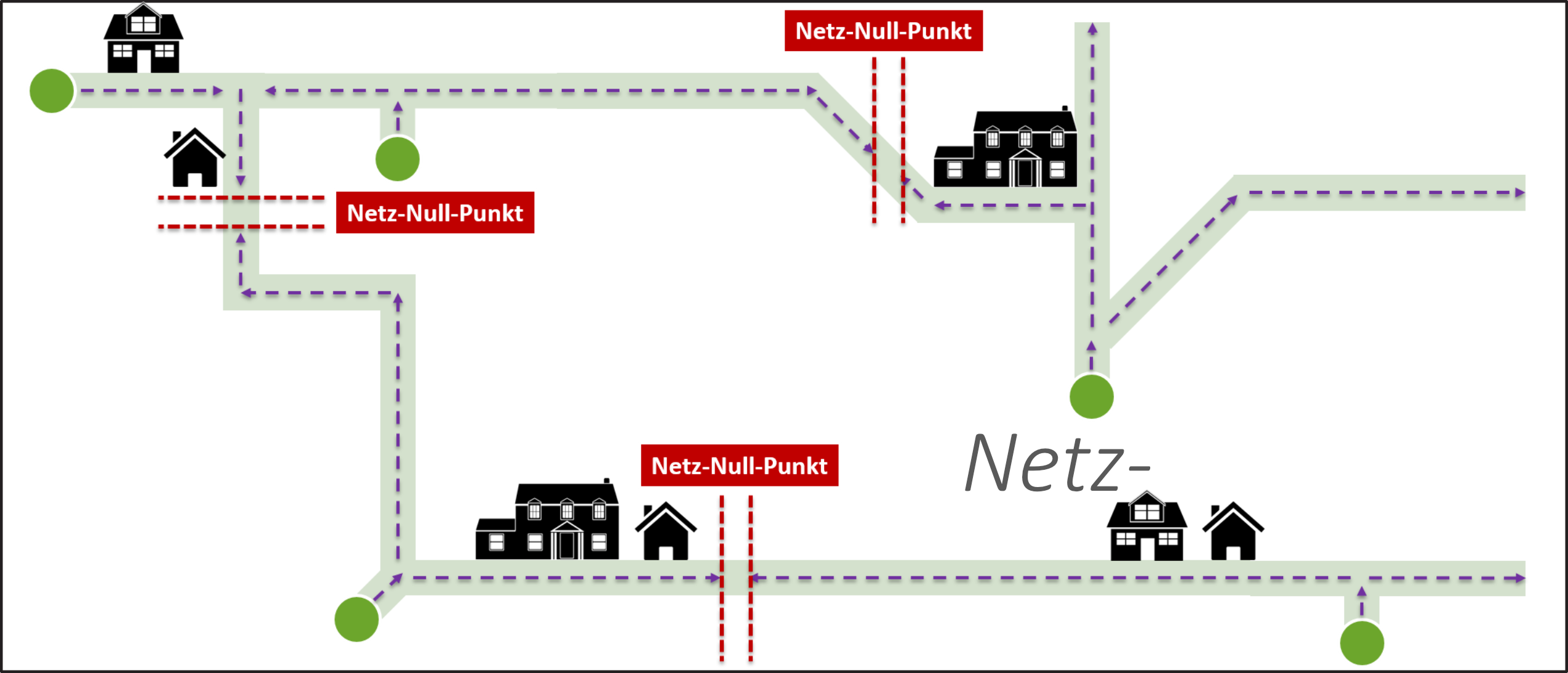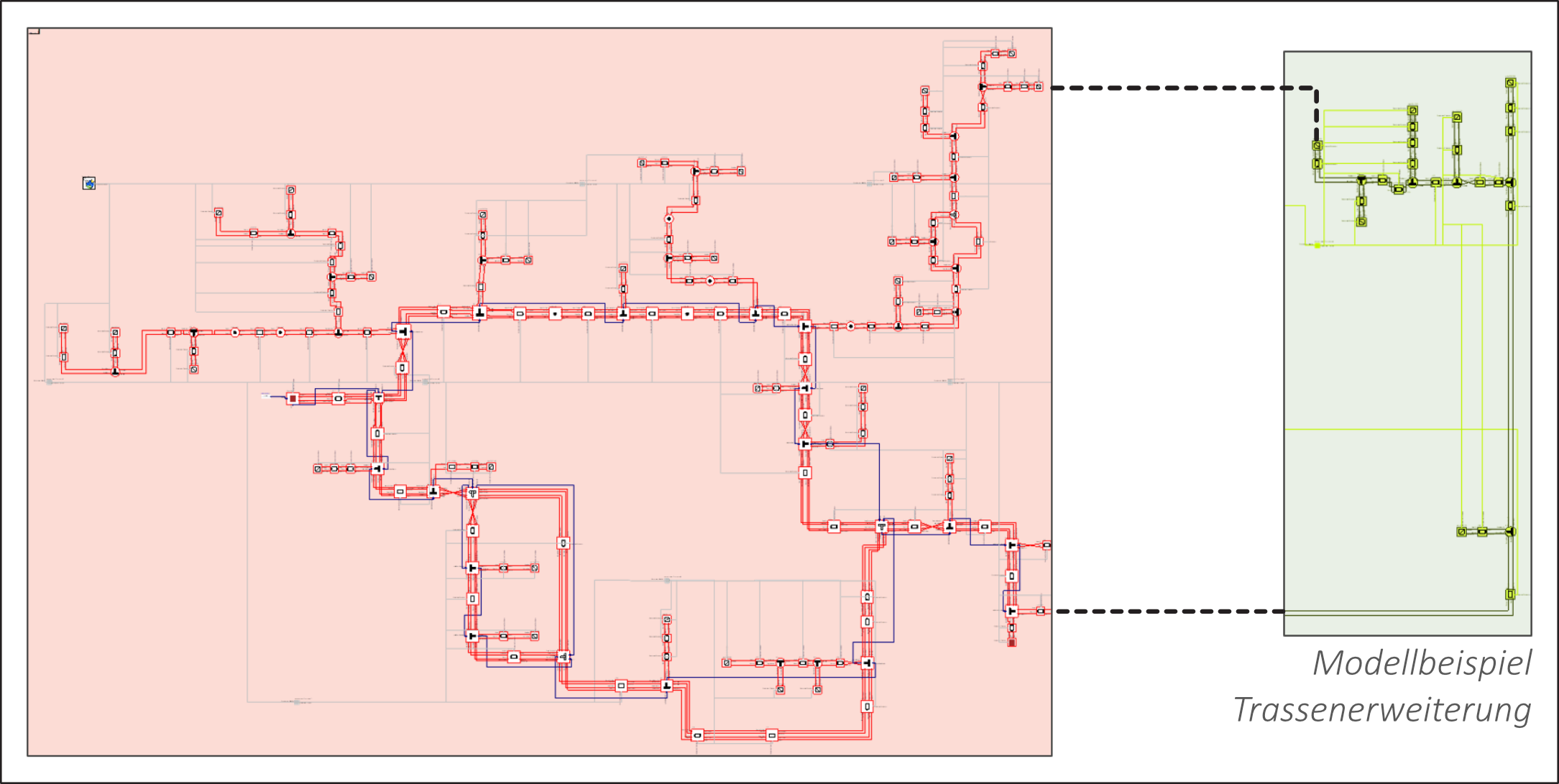The district heating grid simulation is a long-term, sustainable method to optimize existing supply grids on the one hand and to plan new route sections and district heating grids on the other hand. Current and future problems, issues and associated decisions such as the decarbonization of supply grids and the energy transition itself are constantly creating new framework conditions for a future-oriented energy supply. Against this background, the engineers of EA Systems Dresden GmbH have developed the District Heating Grid Simulation Library. Thanks to their know-how and this powerful tool, all conceivable scenarios, problems and challenges in terms of the energy transition, both in the context of an inventory optimization, as well as in the new planning and route expansion, can be simulated long-term-sustainably, solved model-based and mastered.
Are you also faced with complex questions and problems that cannot be answered using conventional calculation methods?
- Where are the bad points and critical areas of the district heating grid?
- Where are the “floating” zero points within the district heating grid?
- How does the district heating grid behave at different grid points at different times under different conditions?
- What is a reasonable route and plant dimensioning for the newly planned district heating grid?
- Is it worthwhile to operate a heat pump in combination with a cooling/heat storage system?
- Can several smaller district heating grids be combined into one large one?
- How do the hydraulic conditions in a grid change when several small district heating grids are combined to form a larger one?
- Which flow and return temperatures are required to ensure an efficient heat supply?
Optimization of existing heating grids
Bad point analysis
- Identification of critical network areas
- Optimization of critical network areas
- Preparation of load profiles
- Determination of demand/consumption
- Dynamic grid simulation
- Evaluation of the control behavior
- Determination of heat & power yield points
- Profitability forecasts
- Investigation of multivalent feed-in & dynamic regulation
- Evaluation of the impact on grid hydraulics
Planing of new heating grids / Grid extensions
Demand analysis
- technical components & systems
- Heating/cooling supply and storage
- of existing supply concepts
- CO2 & energy saving potentials
- preliminary analyses
- demand-oriented conceptual design
- conventional (partially) regenerative supply
- optimized schedule & measures recommendation
- Integration of different Supply concepts
- Integration of renewable energies, e-mobility & hydrogen



